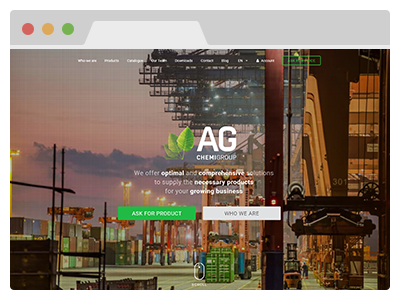 The Year Ahead for Chemicals
02. 16. 2018
#The Chemical Industry
The Year Ahead for Chemicals
02. 16. 2018
#The Chemical Industry

No one can be certain of the future, but in the dynamic world of the chemical industry it is important to keep a finger on the pulse of chemical markets and expert opinion. With this in mind, this article presents a snapshot of the business trends, chemical industry analytics, and a general outlook across the chemical industry from a wide variety of professional perspectives.
A Positive or Negative Outlook?
It is notable that the renowned industry consultants at McKinsey are making some less than favourable predictions. In particular the January 2018 report on Mergers and Acquisitions on the Chemical Industry observes that, “The chemical industry has experienced a slowdown of organic sales growth in most of its subsegments and across most regions. Pressure on margins caused by new entrants, lack of innovation, and diminishing opportunities to differentiate against competitors is spurring consolidation in segments that traditionally have been high in value creation, such as crop protection and seeds.”
Even more pessimistically, they add that, “This trend is also touching a wider selection of specialty-chemical areas, including pigments, additives, and engineering plastics.”
Despite these negative pressures, the overall expectation for the chemical industry is positive, with most expert opinions forecasting moderate growth, albeit that some fear that 2018 will be worse than 2017. As the non-profit organisation of the American Institute of Chemical Engineers (AIChE) notes, “The future will brighten … this year and beyond, as global chemical production will experience year-over-year growth of 3.3% in 2018.”
Here is the view region by region.
North America
One of the brightest chemical industry outlooks is reserved for North America. The American Chemistry Council (ACC) notes that, “American chemistry is experiencing a ‘renaissance’ as new investments come online while others continue to be announced. At the same time, US chemical companies continue to research improving efficiencies and product development. The continued recovery in the oil and gas sector, as well as improvement in related investments, is a leading factor behind the stronger economic growth figures.” Adding that the data shows that, “US chemistry output is expected to increase by 3.7% in 2018, driven mainly by export growth due to new capacity coming online.”
This is an opinion supported by chemical industry analysts at ICIS, who note that, “Continued gains in manufacturing and exports during 2018 and beyond will drive demand for basic chemicals, in particular for areas where the US has a renewed competitive advantage.”
Canada, meanwhile, is expecting to go through a period of major investment. As the January 2018 edition of C&EN reports in its World Chemical Outlook for 2018, “When it comes to investing in new chemical capacity, Canada has long dreamed big and delivered modestly. But that changed last month when Canadian firms green-lighted two large projects.”
Bob Masterson, president of the Chemistry Industry Association of Canada (CIAC) is proud of this growing confidence, stating, “It has taken a lot of work to get everybody rowing their oars in the same direction, but we seem to be getting some results.”
The CIAC also states that, “In 2017, the Canadian chemicals industry saw sales increase by 7% to hit $20.8 billion. [While] Chemical makers surveyed expect another 7% sales increase this year.”
The EU
Optimism in North America has spread across the Atlantic and, for the first time in a long time, can now be felt in Europe. As Marco Mensink, Cefic’s director general senses, “The momentum is growing!”
This feeling is supported by the data in the latest Cefic report from December 2017 (pdf) which found that, “Cefic is expecting solid 3% growth of chemical output in the EU in 2017, driven by growing demand from customer industries. A slight deceleration to around 2% is forecast for 2018. The recovery of the chemical sector follows the overall economic growth in the EU in the first three quarters of 2017, driven by robust consumer demand as well as investments in new production capacities.”
This is specifically notable in Germany, which C&EN describes as, “the heartbeat of Europe’s chemical industry.” Adding that, “the forecast is for chemical sales to rise 3% in 2018 to more than $230 billion. In 2017, Germany’s chemical sales increased more than 5%.”
Kurt Bock, head of German chemical maker BASF, also commented on the change in mood in the sector, noting in a recent press conference that, “We are confident that the upward trend will last next year, but where political aspects are concerned, we need to brace ourselves for persistently turbulent times.”
You can read more predictions for European chemical production in the AG CHEMI GROUP blog The Rise, Fall, and Future of the European Chemical Industry.
The UK
With the UK imminently leaving the EU, the outcome of Brexit negotiations is casting a long shadow across the British chemical industry. Despite this, the sector remains surprisingly buoyant.
Professional chemical consultants at Protel Associates, reporting that, “Strong growth in production over the last 12 months of 3.4% has shown maintained demand in the UK chemical industry and bodes well for the outlook into 2018. Sales and export levels grew, albeit modestly; this is expected to largely continue into 2018, with a slight slowing down possible. When surveyed, 60% of industry figures expected their margins to stay the same, with moderate demand growth predicted.”
Asia
Alongside American markets, the outlook for chemical industry growth looks very promising in Asia. As the C&EN report notes, “Demand for chemicals is steady in China, Japanese chemical companies are upgrading their profit forecasts, and economic growth is accelerating in India. In sum: The outlook for the Asian chemical industry in 2018 is good.”
Steve Jenkins, vice president of chemicals consulting at market research firm PCI Wood Mackenzie, believes that data from India, Japan and Indonesia shows that there is a “positive outlook for the Asian chemical industry as a whole.”
His findings are based on the understanding that Japanese chemical companies will improve margins by focusing on technologically advanced materials, as well as a continued weak valuation of the yen.
Chinese Challenges
While like the rest of Asia, the outlook for chemicals is optimistic, there is a hidden uncertainty among Chinese chemical manufacturers. This is based on two key points:
1.Financial markets and policy.
If there is continued turbulence in stock markets, particularly in the US, then the mood of chemical suppliers could quickly change.
Added to this are concerns that central government may reallocate funds away from industrial development towards reducing debt. Paying off money owed by both the private and public sectors may become a political priority over growth. Doing so would be certain to dampen the economy as a whole.
2.Environmental policy.
The last two years has seen significant efforts by the Chinese politburo to lower industrial emissions and the impact on the environment. Chinese President Xi Jinping’s Blue Skies policy has severely limited chemical production.
As Peter Huo, vice president for sales and marketing at the Chinese polyurethane chemicals producer Wanhua Chemical states, “Even when their operations are compliant, Wanhua and its competitors have had to cut production as a result of China’s environmental crackdown. Wanhua, for example, had to temporarily reduce production at some of its plants because some of the buyers of our products had to stop theirs.
On the upside, the combination of constant demand and lowered supply due to the crackdown is boosting profit margins.
You can read more about the impact of Chinese environmental policy in other articles in the AG CHEMI GROUP blog page. For example, How Chinese Environmental Policy is Stopping Chemical Production, or Chinese Chemical Prices Surge due to Blue Skies Policy.
South America
Following years of sluggish growth and two years (2015 and 2016) of recession, it is pleasing to see a more optimistic outlook for Latin American economies. The wider economic growth has been fuelled by recent currency devaluations, a strong global economy, and rising commodity prices. This is aiding expansion, as well as increased sales and output in the chemicals industry.
While problems do remain (political uncertainty in Brazil, supply challenges in Mexico, and Venezuela’s upheaval), there is a trickle of positive data that bodes well for the future.
The Middle East
For years the Middle East enjoyed a competitive advantage with access to cheap oil while the rest of the world was paying more than $100 a barrel. Now that prices have become more stable and seem set at $60 a barrel for the near future, businesses in the Middle East are having to look beyond oil for revenue.
As a result, many Middle Eastern chemical companies are looking to move away from petrochemicals towards higher-value specialty chemical products. As an example, C&EN reports of the heavy investment made by Dow Chemical and Saudi Aramco at the Sadara Chemical Company joint venture. Explaining how, “Last year, Sadara started up a polyurethane raw material plant at its complex in Jubail, Saudi Arabia. It is the last of 26 facilities to be commissioned at the $20 billion site. A raft of downstream facilities—such as a plastics processing plant—are now being built nearby.”
As well as replacement chemical products, the Middle East is also seeking replacement markets. This is because China has become more energy and raw material self-sufficient, while US shale gas further erodes petrochemical profit margins. Meanwhile, political uncertainty in Iraq, strained US-Iran relations and the embargo, economic and political turbulence in Libya, Egypt, Tunisia, the wars in Syria, Oman and against ISIS, are all creating a time of great change.
When combined these geopolitical changes and economic fluctuations have created a difficult position for the regional chemical industry.
Change is an issue addressed by Yousef Al-Benyan, CEO of SABIC when he said, “One thing we know for certain: The status quo is not an option. The fundamental change required to deliver a quantum leap in performance is transformation; it is not an incremental improvement.”
It is natural that Al-Benyan warns of the need for change, but not only for SABIC and the Middle East, but as a warning to anyone who works in the chemical industry.
The chemicals sector has always been dynamic. It is an industry built on innovation and intense competitive trading. As an underpin of modern life, ripples in the global economy cause waves in chemical product margins; political uncertainty manifests fear in chemical manufacturing; turbulence in financial markets creates storms in investment-heavy chemical production.
So, while the outlook for the chemical industry in 2018 may be positive, how confident should we be when we know that change is always just around the corner?
Client Zone – Be in Touch with All the Important Information
Take the opportunity to register in our client zone to find complete product specifications and latest updates on our offers.
Photo credit: Unitedmethodistchurch, Freeukrainenow, Arabianoilandgas, ShellUS & Youtube
